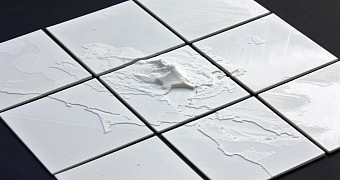Actions can't be immortalized unless you make a photo, painting or video of them. However, the results of actions can definitely be rendered by various means.
Which brings us to today's topic: a man by the name of Doug McCune decided to 3D print earthquake data recorded by the USGS.
He was awoken by an earthquake that hit Napa, California, on August 24, 2014, and reached 6.0 on the Richter scale and caused around 200 injuries, plus damages of almost 1 billion dollars / euro.
McCune wanted to see how the earthquake compared to some of the other large ones that sometimes hit the San Francisco area. And since he had some knowledge of 3D printing, he decided to use that as a medium for his research.
So he got the data he was interested in from the USGS (they've been storing earthquake readings since 1989). It didn't hurt that he works for SpatialKey, a company that makes mapping software for studying natural disasters, and various elements in the insurance industry.
First step was taking the USGS data, a set of polygons that show the intensity of the shaking. Then he processed the data through GIS software. After that, he used his own software to convert it to a 3D model, which he printed it with the 3D printer in his garage, an Afinia Series H (a high-quality one, as far as consumer FDM printers go).
He finished with 9 tiled sections, since he wanted the tiled nature of the readings to show.
In the end, it was just a whim of the man to do this, but people are already commenting on the potential for it being considered art. McCune intends to print some other earthquakes, so don't be surprised if you see more of his models cropping up on his GitHub page where he's publishing the models.

 14 DAY TRIAL //
14 DAY TRIAL //